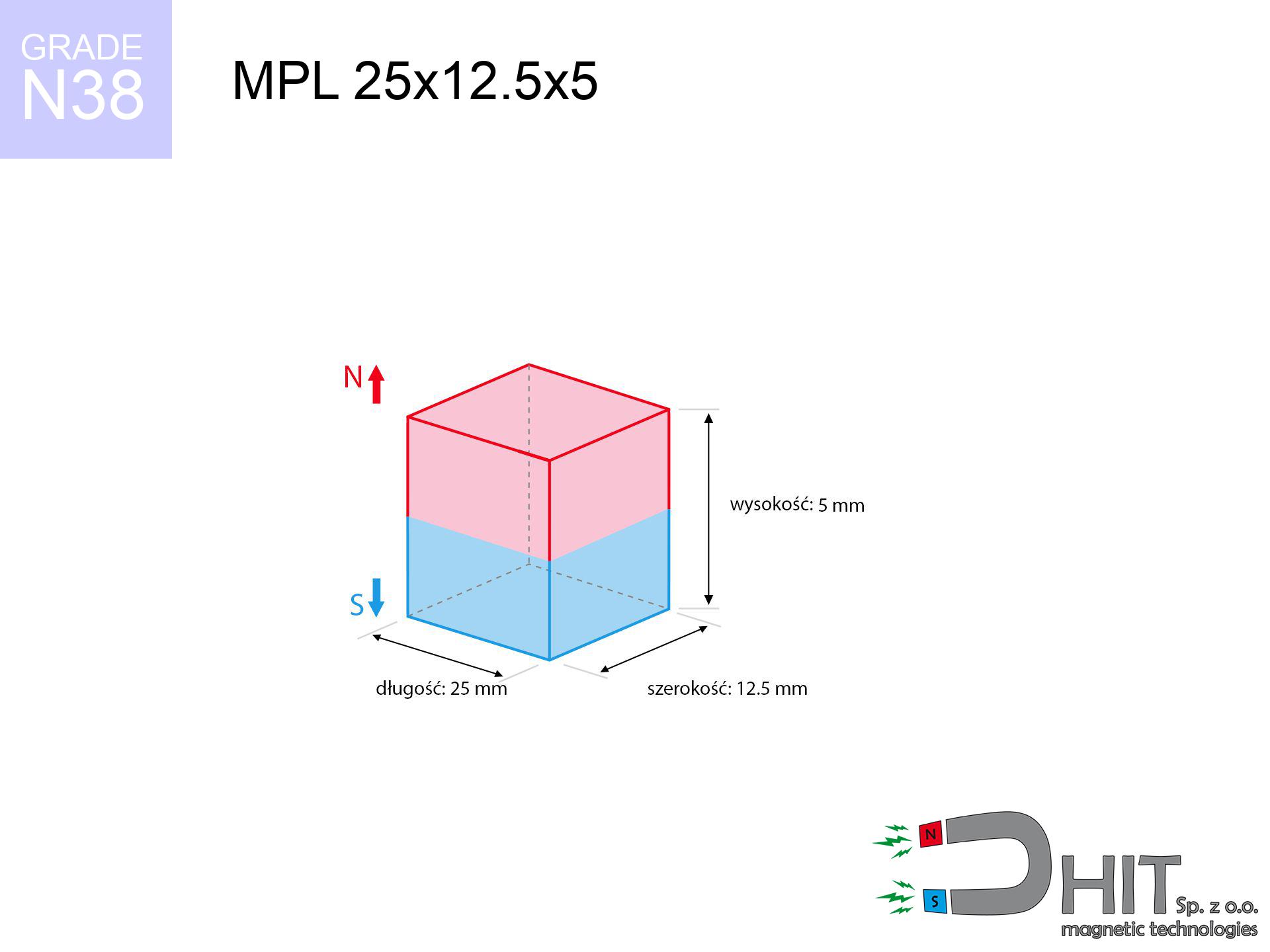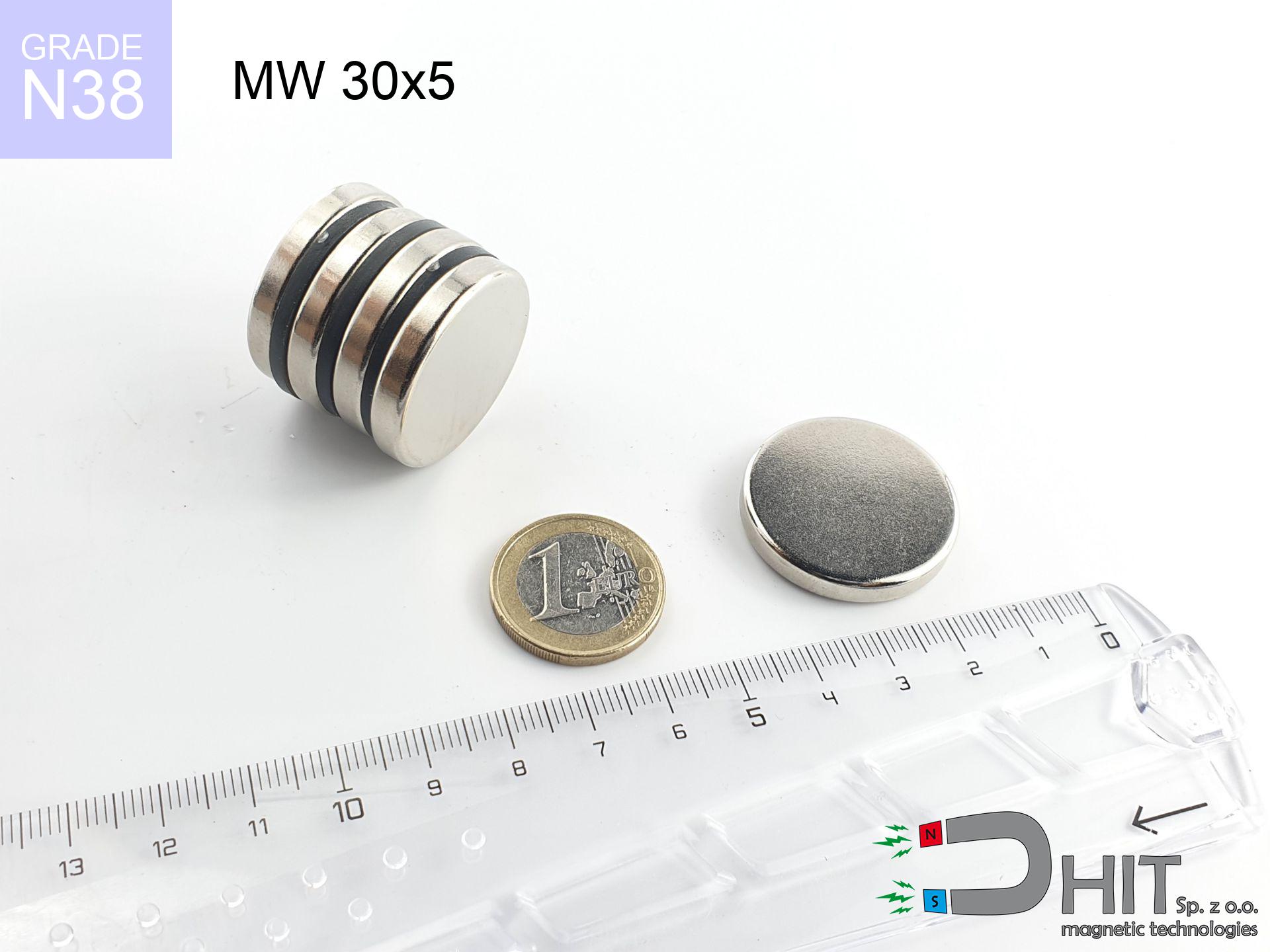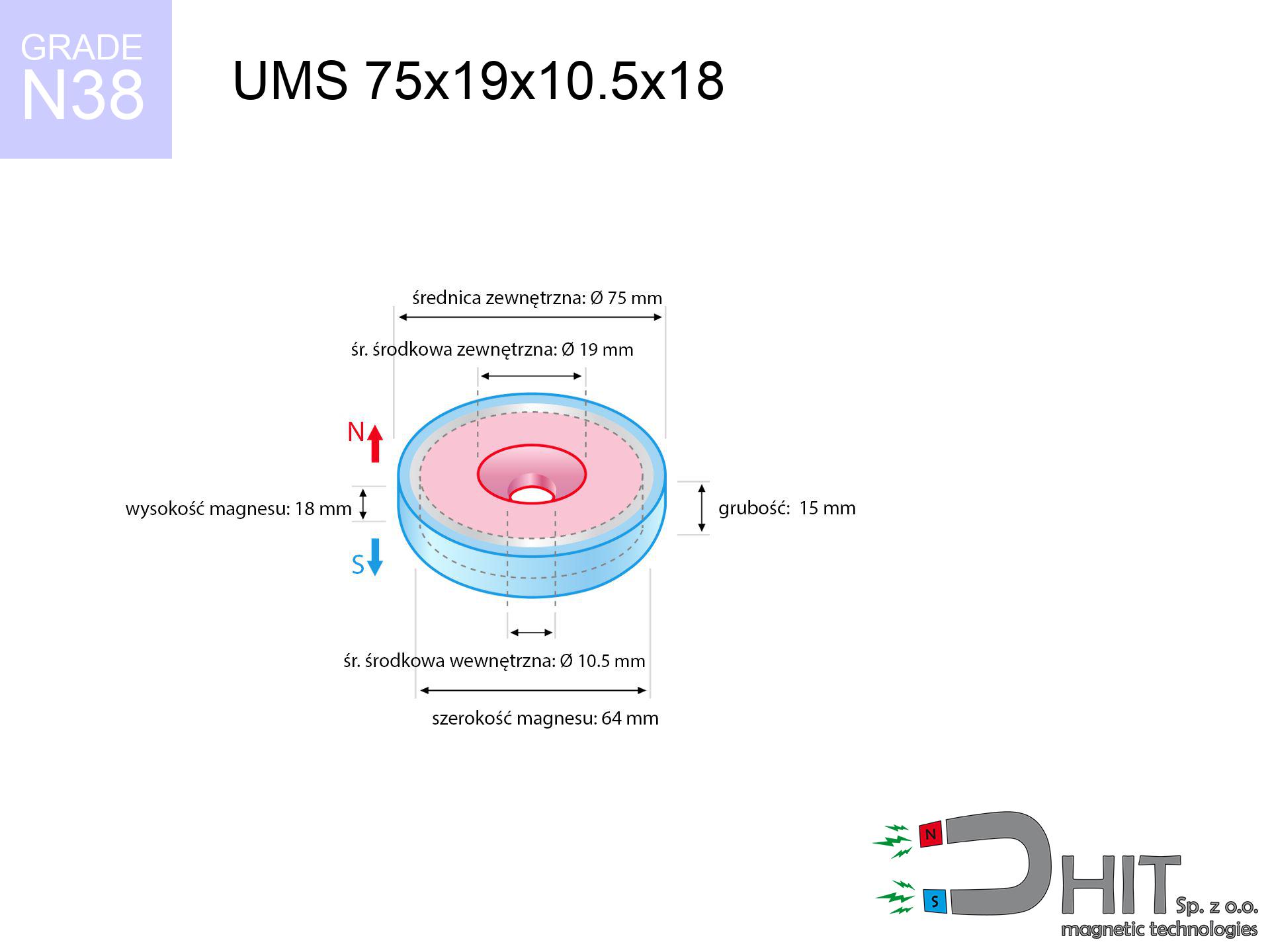MPL 25x12.5x5 / N38 - lamellar magnet
lamellar magnet
Catalog no 020136
GTIN: 5906301811428
length
25 mm [±0,1 mm]
Width
12.5 mm [±0,1 mm]
Height
5 mm [±0,1 mm]
Weight
11.72 g
Magnetization Direction
↑ axial
Load capacity
6.98 kg / 68.45 N
Magnetic Induction
299.70 mT
Coating
[NiCuNi] nickel
4.92 ZŁ with VAT / pcs + price for transport
4.00 ZŁ net + 23% VAT / pcs
bulk discounts:
Need more?Want to talk magnets?
Call us now
+48 888 99 98 98
or send us a note through
inquiry form
our website.
Strength along with structure of a magnet can be verified on our
power calculator.
Orders placed before 14:00 will be shipped the same business day.
Magnetic properties of material N38
Physical properties of sintered neodymium magnets Nd2Fe14B at 20°C
Shopping tips
Pros as well as cons of neodymium magnets.
Apart from their strong power, neodymium magnets have these key benefits:
- They have stable power, and over around ten years their performance decreases symbolically – ~1% (according to theory),
- They have excellent resistance to magnetic field loss due to opposing magnetic fields,
- In other words, due to the smooth finish of gold, the element is aesthetically pleasing,
- The surface of neodymium magnets generates a intense magnetic field – this is a distinguishing feature,
- Through (adequate) combination of ingredients, they can achieve high thermal resistance, allowing for functioning at temperatures approaching 230°C and above...
- Thanks to modularity in designing and the capacity to customize to client solutions,
- Huge importance in modern technologies – they serve a role in data components, motor assemblies, diagnostic systems, and complex engineering applications.
- Thanks to concentrated force, small magnets offer high operating force, occupying minimum space,
Disadvantages of neodymium magnets:
- They are prone to damage upon too strong impacts. To avoid cracks, it is worth protecting magnets using a steel holder. Such protection not only protects the magnet but also increases its resistance to damage
- Neodymium magnets decrease their strength under the influence of heating. As soon as 80°C is exceeded, many of them start losing their power. Therefore, we recommend our special magnets marked [AH], which maintain stability even at temperatures up to 230°C
- Due to the susceptibility of magnets to corrosion in a humid environment, we suggest using waterproof magnets made of rubber, plastic or other material stable to moisture, when using outdoors
- Limited ability of creating nuts in the magnet and complex forms - preferred is casing - magnetic holder.
- Health risk resulting from small fragments of magnets are risky, if swallowed, which becomes key in the context of child health protection. Additionally, small elements of these products can be problematic in diagnostics medical when they are in the body.
- Due to neodymium price, their price is relatively high,
Magnetic strength at its maximum – what affects it?
Breakaway force was determined for the most favorable conditions, taking into account:
- with the contact of a yoke made of low-carbon steel, ensuring maximum field concentration
- whose thickness equals approx. 10 mm
- characterized by lack of roughness
- with zero gap (no paint)
- during detachment in a direction perpendicular to the mounting surface
- in stable room temperature
Determinants of practical lifting force of a magnet
In practice, the real power results from many variables, presented from most significant:
- Gap between surfaces – even a fraction of a millimeter of separation (caused e.g. by veneer or dirt) diminishes the pulling force, often by half at just 0.5 mm.
- Angle of force application – highest force is reached only during perpendicular pulling. The shear force of the magnet along the plate is typically many times smaller (approx. 1/5 of the lifting capacity).
- Base massiveness – too thin plate does not accept the full field, causing part of the flux to be wasted into the air.
- Plate material – low-carbon steel gives the best results. Higher carbon content decrease magnetic properties and holding force.
- Base smoothness – the more even the plate, the better the adhesion and higher the lifting capacity. Roughness creates an air distance.
- Temperature influence – high temperature weakens magnetic field. Too high temperature can permanently demagnetize the magnet.
* Lifting capacity testing was conducted on a smooth plate of optimal thickness, under a perpendicular pulling force, whereas under shearing force the holding force is lower. Moreover, even a minimal clearance {between} the magnet’s surface and the plate decreases the holding force.
Precautions when working with NdFeB magnets
Precision electronics
A strong magnetic field interferes with the functioning of magnetometers in phones and navigation systems. Maintain magnets close to a smartphone to prevent breaking the sensors.
Keep away from computers
Equipment safety: Strong magnets can damage payment cards and sensitive devices (pacemakers, hearing aids, mechanical watches).
Permanent damage
Watch the temperature. Exposing the magnet above 80 degrees Celsius will permanently weaken its magnetic structure and pulling force.
This is not a toy
Strictly store magnets out of reach of children. Ingestion danger is high, and the consequences of magnets clamping inside the body are life-threatening.
Sensitization to coating
Medical facts indicate that the nickel plating (the usual finish) is a strong allergen. If you have an allergy, prevent touching magnets with bare hands or opt for encased magnets.
Fire warning
Powder created during machining of magnets is flammable. Do not drill into magnets unless you are an expert.
Health Danger
People with a ICD must keep an absolute distance from magnets. The magnetism can interfere with the operation of the life-saving device.
Magnets are brittle
Despite the nickel coating, the material is brittle and not impact-resistant. Avoid impacts, as the magnet may crumble into hazardous fragments.
Handling guide
Use magnets consciously. Their huge power can surprise even professionals. Stay alert and respect their power.
Pinching danger
Pinching hazard: The attraction force is so immense that it can cause blood blisters, crushing, and even bone fractures. Use thick gloves.
Important!
Learn more about hazards in the article: Magnet Safety Guide.





![UMGZ 20x15x7 [M4] GZ / N38 - magnetic holder external thread UMGZ 20x15x7 [M4] GZ / N38 - magnetic holder external thread](https://cdn3.dhit.pl/graphics/products/um-20x15x7-m4-gz-vaf.jpg)



